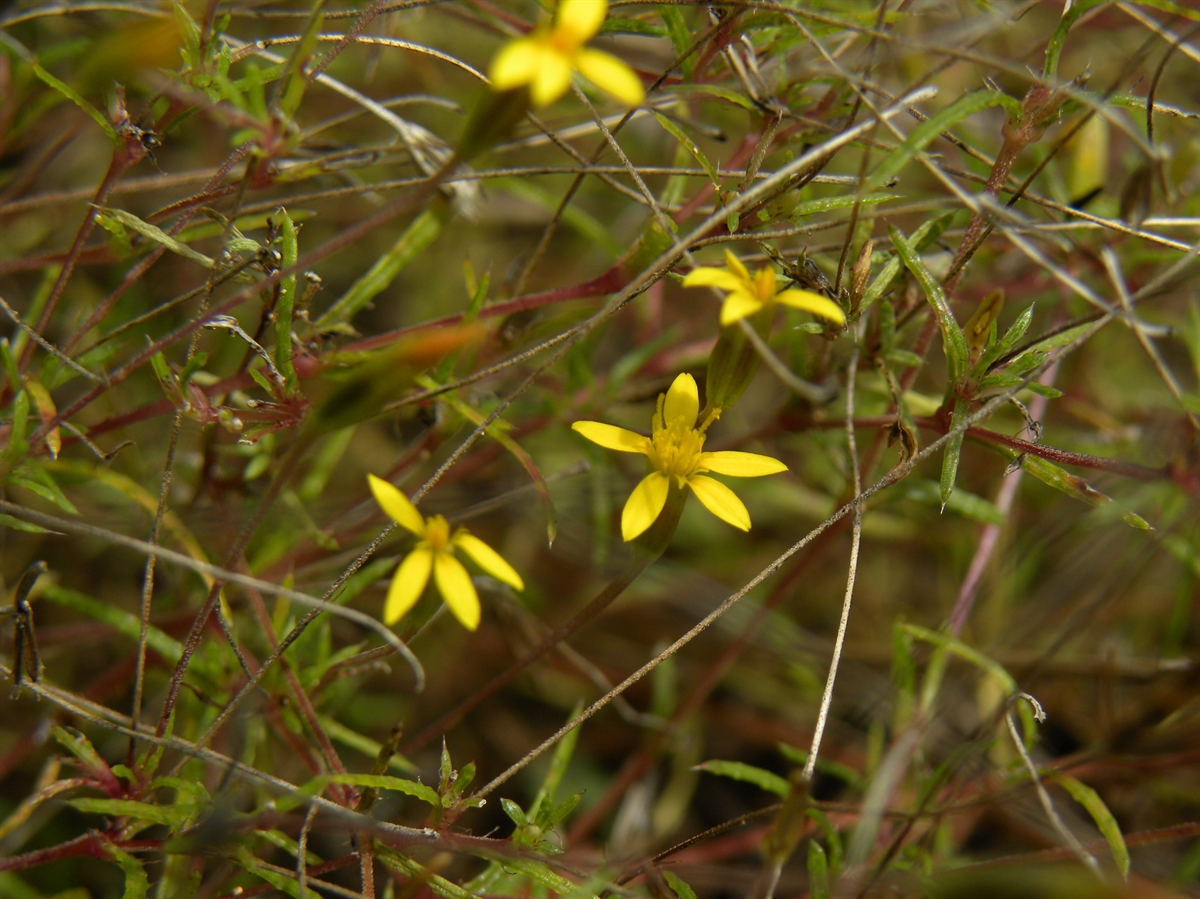Habit: Pectis glaucescens is a glabrous perennial herb up to 50 cm in height (usually less). Leaves then arranged oppositely, linear with near the leaf base with bristles along the margin, to 3 cm in length and 2 mm wide, with glands along the abaxial surface paralleling the midvein.
There are both perfect and imperfect (carpellate) flowers into solitary heads. The heads are subtended by a series of keeled, linear, involucral bracts (phyllaries). The perfect (disc) flowers are in the center and the imperfect (ray) flowers are arranged around the edge of the heads. Each flower is subtended by 5 bracts. The calyx is modified as a ring of small projections (pappus) as scales.
The incomplete, imperfect, zygomorphic flowers have 3 yellow fused petals and no stamens. The complete, perfect, actinomorphic flowers have a corolla with 5 fused, yellow petals. There are 5 stamens fused at their base. In both types of flowers, the ovary is inferior with a single locule but only the imperfect flowers have functional ovules. The fruit is a bristled achene at maturity that retains the modified calyx (pappus).
Habitat: Pectis glaucescens grows in disturbed Pine Woodlands, Sabal palmetto flats, wet areas, and Human Altered environments (yards, roadsides, fields).
Distribution: Pectis glaucescens occurs throughout the northern islands of the Lucayan Archipelago, Cuba, Hispaniola, the Caymans, and Florida.
Medicinal/Cultural/Economic usage: Pectis glaucescens is not known to be used medicinally in the Lucayan Archipelago.


